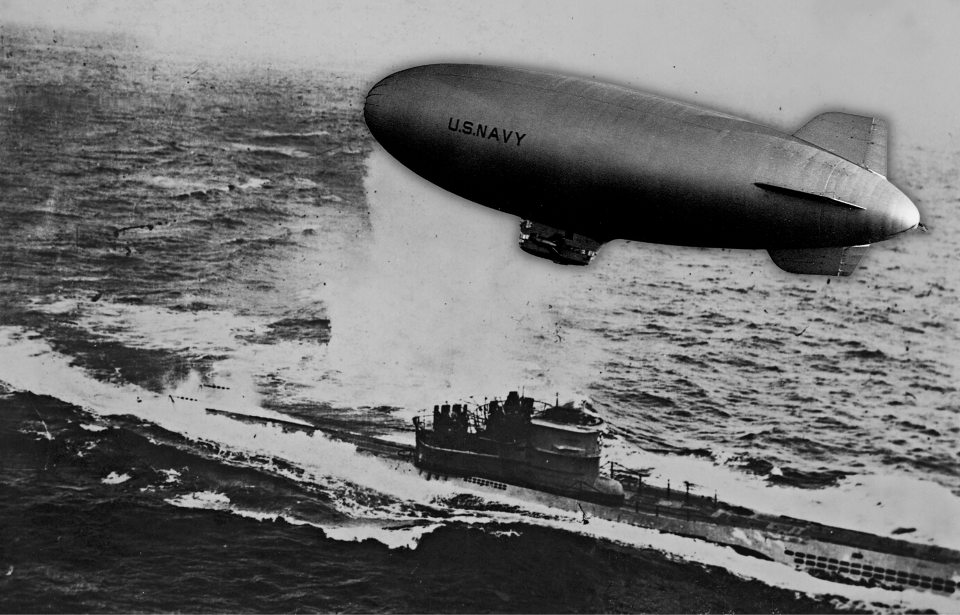In what was arguably the oddest battle to take place during the Second World War, a US Navy blimp duked it out with a German U-boat. It wasn’t a long encounter, but it certainly showed that blimps can do more than search and rescue when their hands are forced. This blimp vs U-boat engagement serves as the only time such an aerial vehicle was ever taken out during the conflict.
Blimps were an integral part of US Navy operations
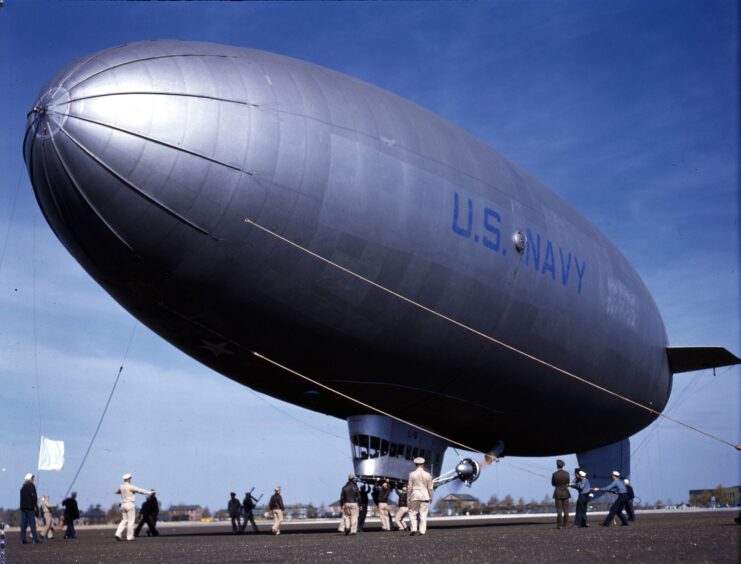
When the US entered the Second World War, blimps became a major part of the Navy’s aviation fleet. Goodyear produced the airships and, by mid-1943, were pumping out 11 per month. The largest blimps were the K-class, and the company manufactured 134 until the close of the conflict.
Blimps participated in over 37,000 patrols with the Navy during World War II. They were excellent at conducting search and rescue operations, particularly because they flew low and for extended periods of time – sometimes up to 26 hours. Although picking up survivors was a difficult task for the airships, they often carried medical equipment and supplies, as well as inflatable lifeboats, to aid survivors until they could be picked up.
Their sheer size made blimps easy to spot by other aircraft and ships. They also had superior visibility, even in heavy fog or low cloud cover. This was invaluable when conducting anti-submarine patrols, as they could easily spot periscopes or oil slicks that indicated the location of enemy U-boats.
Operation Paukenschlag
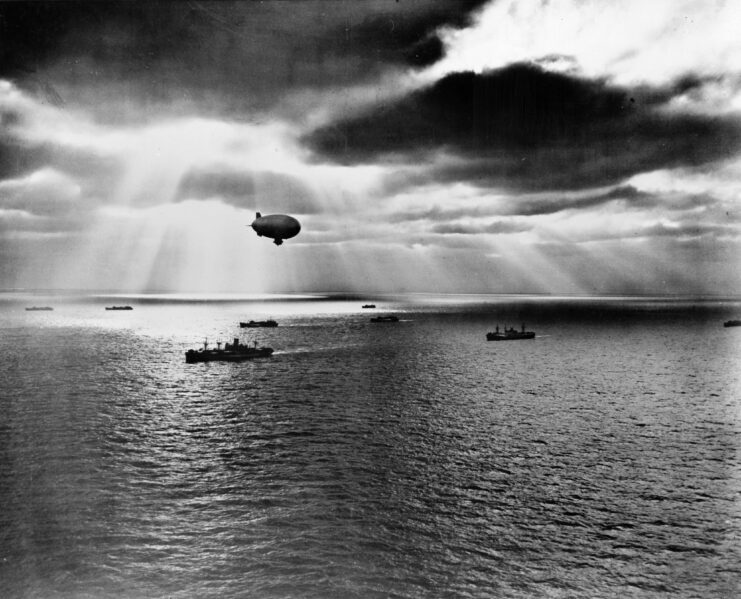
In mid-January 1942, the Kriegsmarine launched Operation Paukenschlag, also known as “Second Happy Time.” It involved U-boats attacking Allied merchant ships in the Atlantic Ocean, which were carrying vital wartime supplies to Britain, North Africa and Russia.
The US Navy immediately countered by deploying its K-class blimps to conduct anti-submarine patrols. In all of the convoys escorted by the airships, not a single vessel was lost to enemy action. This may not have been entirely the result of the blimps, however, as there were also surface ships and escort carriers with aircraft present.
K-class blimps were fitted with extensive radar equipment
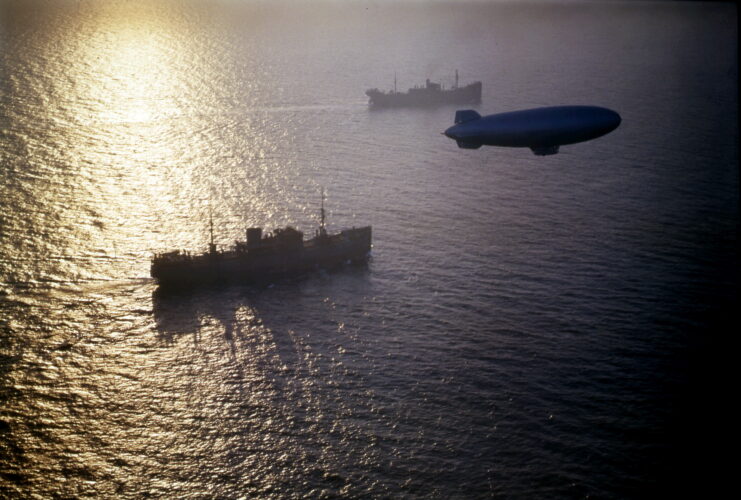
Each blimp was operated by a crew of 10. A keen eye wasn’t the only tool they had to spot unwelcome enemy vessels. Two crew members were radiomen responsible for operating radar that could detect German U-boats during nighttime operations and in cases of extremely low visibility. They also operated long-range radio communications with other US Navy vessels.
K-class blimps were also equipped with a Magnetic Anomaly Detector (MAD), capable of detecting distortions in the Earth’s magnetic field. This is notable because large metal objects, like massive German U-boats, caused such field distortions.
The system only had a range of 400 feet, so the low-flying airships were perfect. However, it wasn’t always accurate. It sometimes detected distortions caused by other large metal objects, such as shipwrecks. As such, the system was often used in tandem with sonobuoys that were dropped to produce sonar contacts.
Blimps could attack enemy U-boats, if necessary
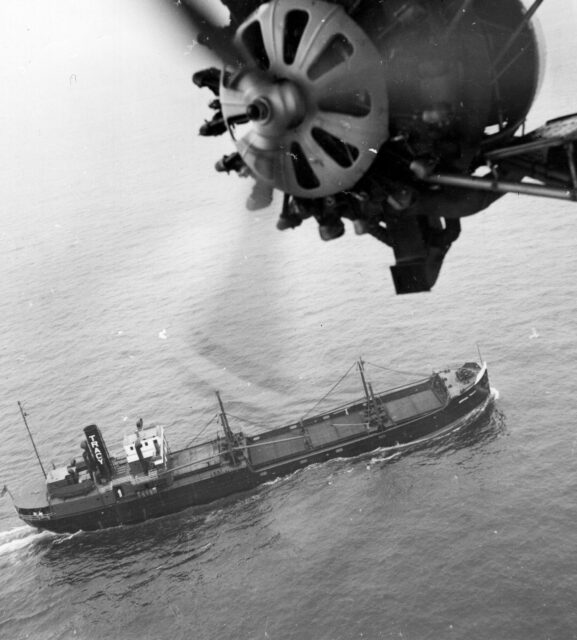
Typically, when a US Navy blimp spotted an enemy U-boat, the crew immediately alerted nearby surface ships and land-based aircraft. Other attack vehicles were largely expected to fire at the enemy, not the airships. In fact, Navy doctrine outlined that blimps were to stay out of range of surfaced submarines and to simply serve as guides for attack vessels and aircraft.
However, in certain instances, the K-class blimps were permitted to engage U-boats by attacking. To do this, they had a small arsenal of weapons. This arsenal changed throughout the course of World War II, but, for the most part, it consisted of two types.
First, each could carry up to four depth charges, mines or acoustic torpedoes. Additionally, a .50-caliber machine gun was located in the turret at the front of the control car. These weapons were meant to damage the enemy vessels or, at the very least, make them surface until reinforcements arrived – they weren’t necessarily intended to defeat the U-boats themselves.
Blimp vs U-boat
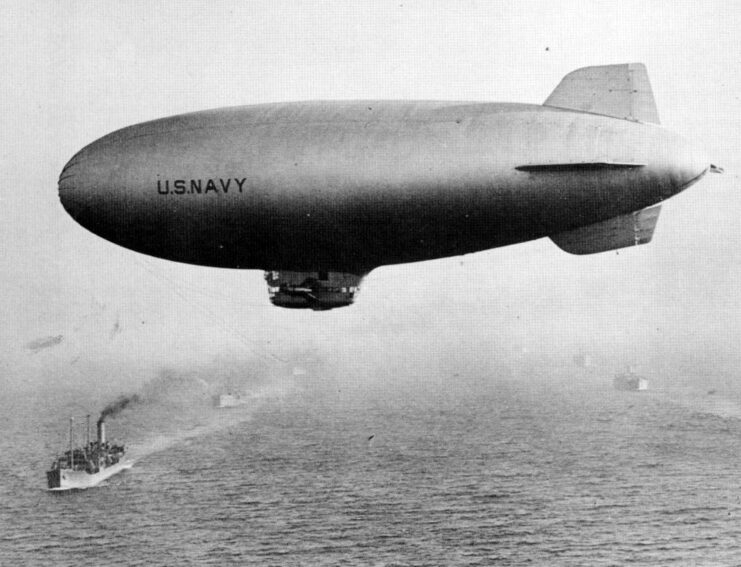
In an instance of a blimp vs a U-boat, K-74 attacked U-134 after it spotted the vessel and determined her to be an immediate threat. During the evening of July 18, 1943, K-74 was patroling the Florida Straits after launching from Naval Air Station Richmond when it detected the U-boat on its radar.
The German vessel was approximately 20 miles from the nearest convoy, which included a freighter and tanker. Still, K-74‘s commander, Lt. Nelson G. Grills, felt U-134 was close enough that his crew needed to interfere.
When the vessel surfaced, she struck the blimp with machine gun fire. K-74 suffered damage and retaliated by firing 100 rounds from its own gun, before the weapon was unable to depress sufficiently. However, the blimp had already begun its bombing run and released depth charges over U-134. These did little damage, and the U-boat opened fire, again, with her own machine guns.
In the end, K-74 sustained too much damage and began to fall from the sky.
K-74 was the only downed blimp of World War II
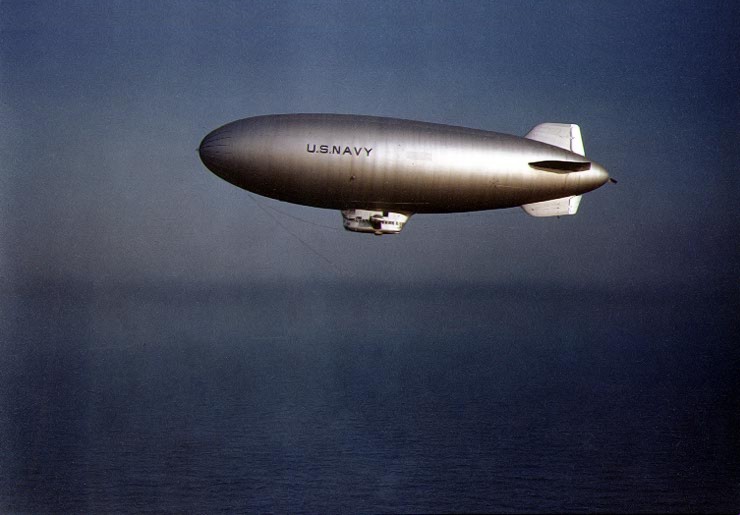
Several holes were made in K-74, causing the blimp to quickly lose altitude. Its crew jettisoned the extra fuel tanks in an attempt to temporarily regain control of the airship. However, it ultimately went nose-up, its tail plunging into the sea – it had lost this blimp vs U-boat showdown.
Fortunately, the crewmen were able to bail out in time. They floated near the wreck for eight hours before being rescued. When they landed in the water, they quickly swam away from the wreck to avoid the possible detonation of its remaining depth charges. For the most part, the men remained safe, but, unfortunately, one didn’t survive the incident. Isadore Stessel was attacked by a shark before they were rescued.
More from us: The 50-Year Battle to Clear Charles McVay III In the Sinking of the USS Indianapolis (CA-35)
The wreck of K-74 was pulled apart by U-134‘s crew, who analyzed the ship, took photographs and recorded observations. The U-boat was able to leave the area following the incident, reporting only minor damage. She carried on with her patrol, but was later sunk off the coast of Spain in August 1943.
